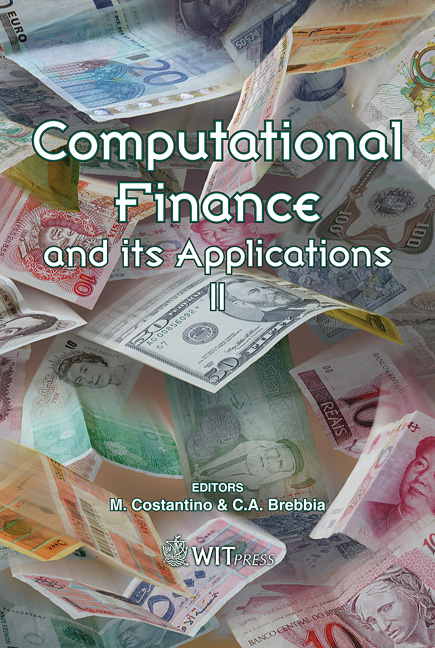Power Coefficient – A Non-parametric Indicator For Measuring The Time Series Dynamics
Price
Free (open access)
Transaction
Volume
43
Pages
9
Published
2006
Size
458 kb
Paper DOI
10.2495/CF060401
Copyright
WIT Press
Author(s)
B. Pecar
Abstract
Time series resume various shapes and exhibit varying dynamics when presented as graphs. Partially, this dynamic is measured via the Hurst exponent and a related metric called the fractal dimension. Both metrics are not sufficiently sensitive to discriminate variations in time series dynamics. To address this need, a non parametric indicator, called the Power Coefficient (the PC coefficient) is suggested. The coefficient was calculated for a number of artificially generated and the real life time series to identify how selective it is. The results indicate that, although it is sensitive to the length of the time series, it is far superior to the existing metrics. Keywords: time series analysis, dynamics metrics, the Hurst exponent, the fractal dimension, the Power Coefficient, the PC coefficient. 1 Introduction A time series is a snapshot, contained in a time window, of the historical behavioural pattern of the observed variable. Various methods are used as descriptive and predictive tools related to time series, and we do not intend to focus on them (for further discussion, see Mills [1], Brockwell and Davis [2], Dunis [3], Enders [4], Kantz and Schreiber [5]). In order to apply a particular method, certain assumptions need to be made. These assumptions are explicitly, or implicitly, linked with the properties of the time series. The usual tests, or assumptions made, are mainly related to the linearity issues, stationarity, serial correlation, process memory and other similar assumptions. Nevertheless, it remains the fact that the general appearance of the time series will influence the choice of the method. The question associated with this is: how do we measure the appearance of the time series? This paper will focus on visual properties of
Keywords
time series analysis, dynamics metrics, the Hurst exponent, the fractal dimension, the Power Coefficient, the PC coefficient.





